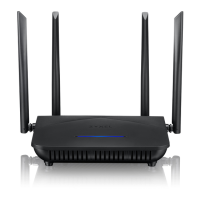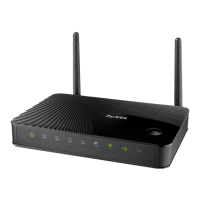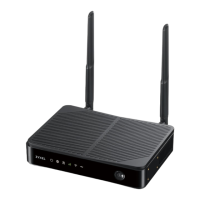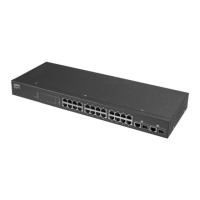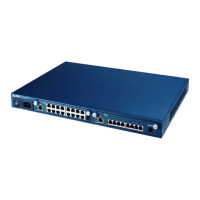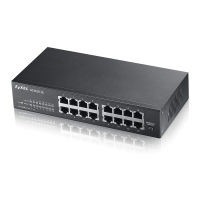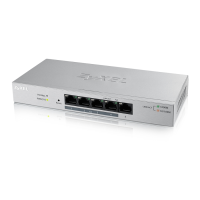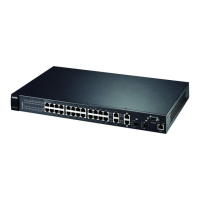NR2301 User’s Guide
47
CHAPTER 6
WI-FI SETTINGS
6.1 Overview
This chapter discusses how to configure the WiFi network settings in your NR2301.
6.1.1 What You Need to Know
Every WiFi network must follow these basic guidelines.
• Every WiFi client in the same WiFi network must use the same SSID.
The SSID is the name of the WiFi network. It stands for Service Set IDentity.
• If two WiFi networks overlap, they should use different channels.
Like radio stations or television channels, each WiFi network uses a specific channel, or frequency, to
send and receive information.
• Every WiFi client in the same WiFi network must use security compatible with the AP.
Security stops unauthorized devices from using the WiFi network. It can also protect the information
that is sent in the WiFi network.
WiFi Security Overview
The following sections introduce different types of WiFi security you can set up in the WiFi network.
SSID
Normally, the AP acts like a beacon and regularly broadcasts the SSID in the area. You can hide the
SSID instead, in which case the AP does not broadcast the SSID. In addition, you should change the
default SSID to something that is difficult to guess.
This type of security is fairly weak, however, because there are ways for unauthorized devices to get the
SSID. In addition, unauthorized devices can still see the information that is sent in the WiFi network.
MAC Address Filter
Every WiFi client has a unique identification number, called a MAC address.
1
A MAC address is usually
written using twelve hexadecimal characters
2
; for example, 00A0C5000002 or 00:A0:C5:00:00:02. To get
the MAC address for each WiFi client, see the appropriate User’s Guide or other documentation.
1. Some wireless devices, such as scanners, can detect wireless networks but cannot use wireless networks. These
kinds of wireless devices might not have MAC addresses.
2. Hexadecimal characters are 0, 1, 2, 3, 4, 5, 6, 7, 8, 9, A, B, C, D, E, and F.
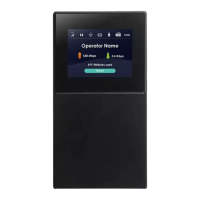
